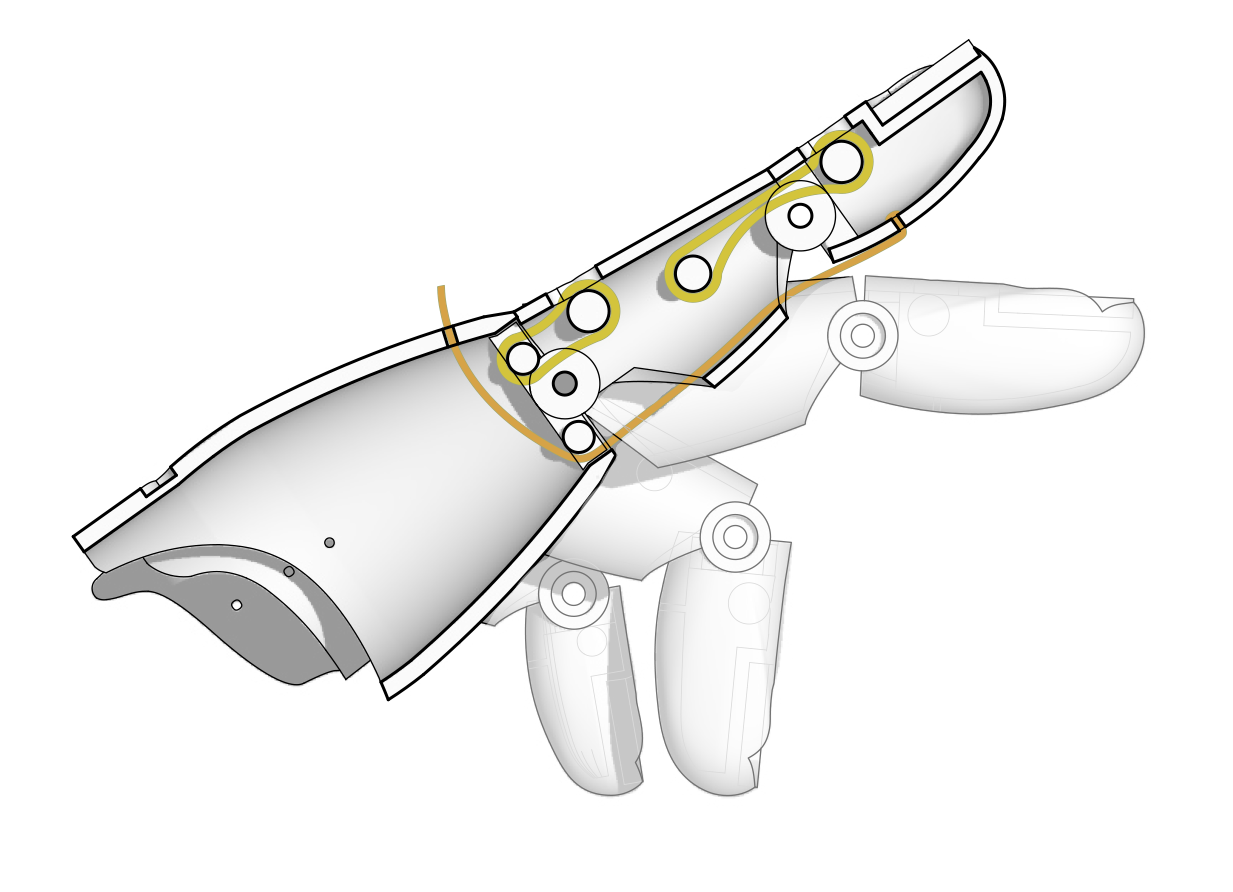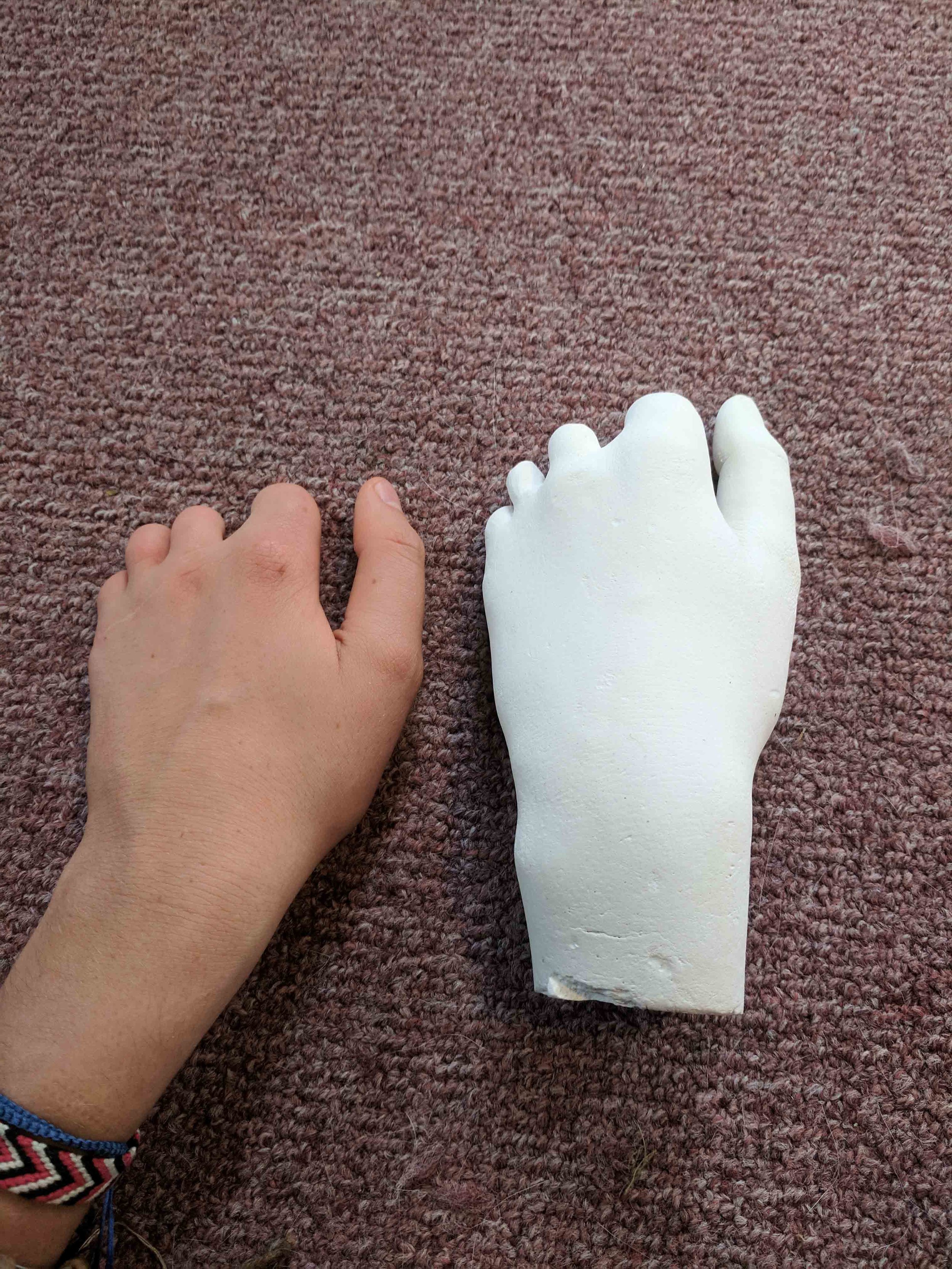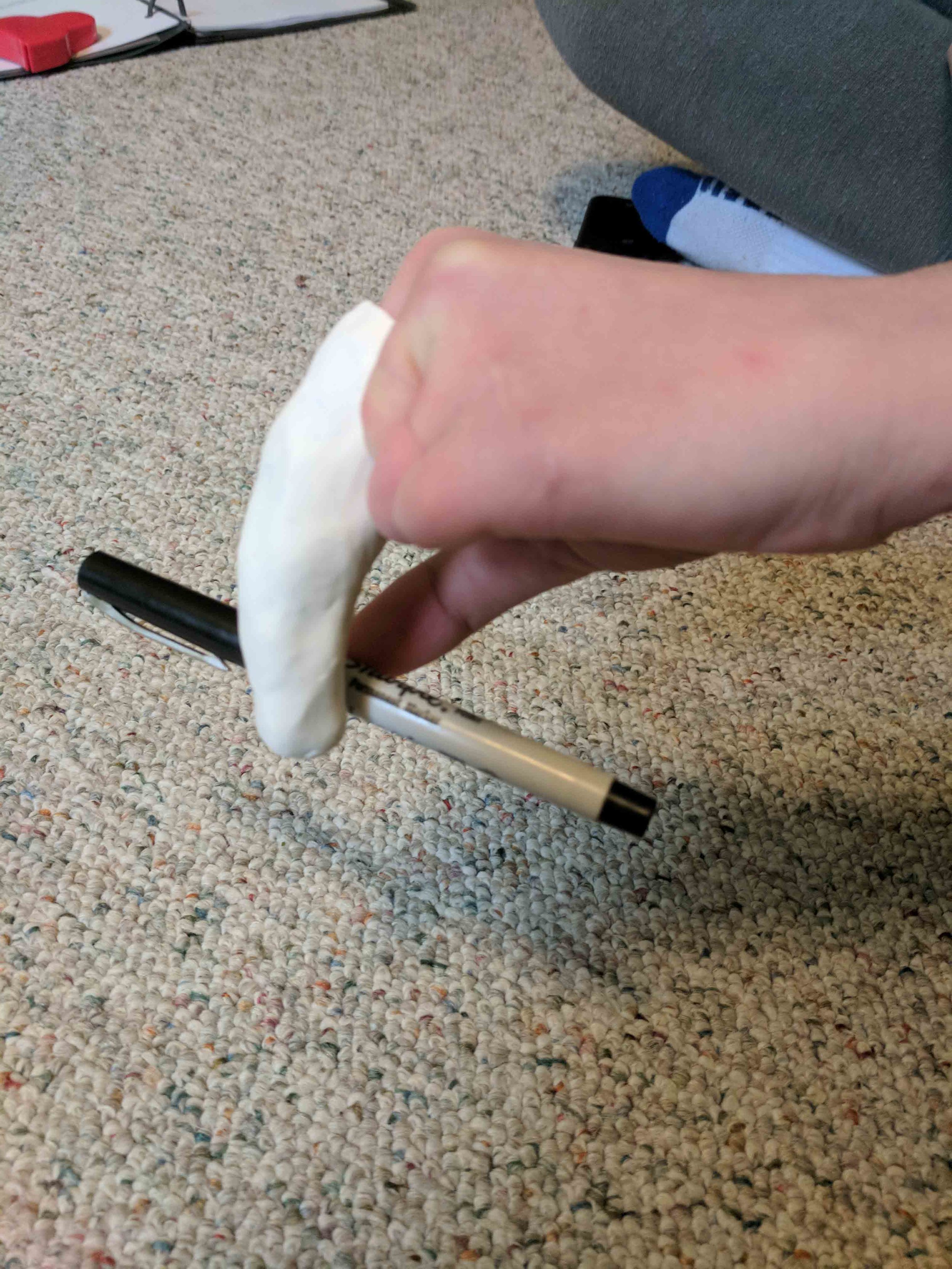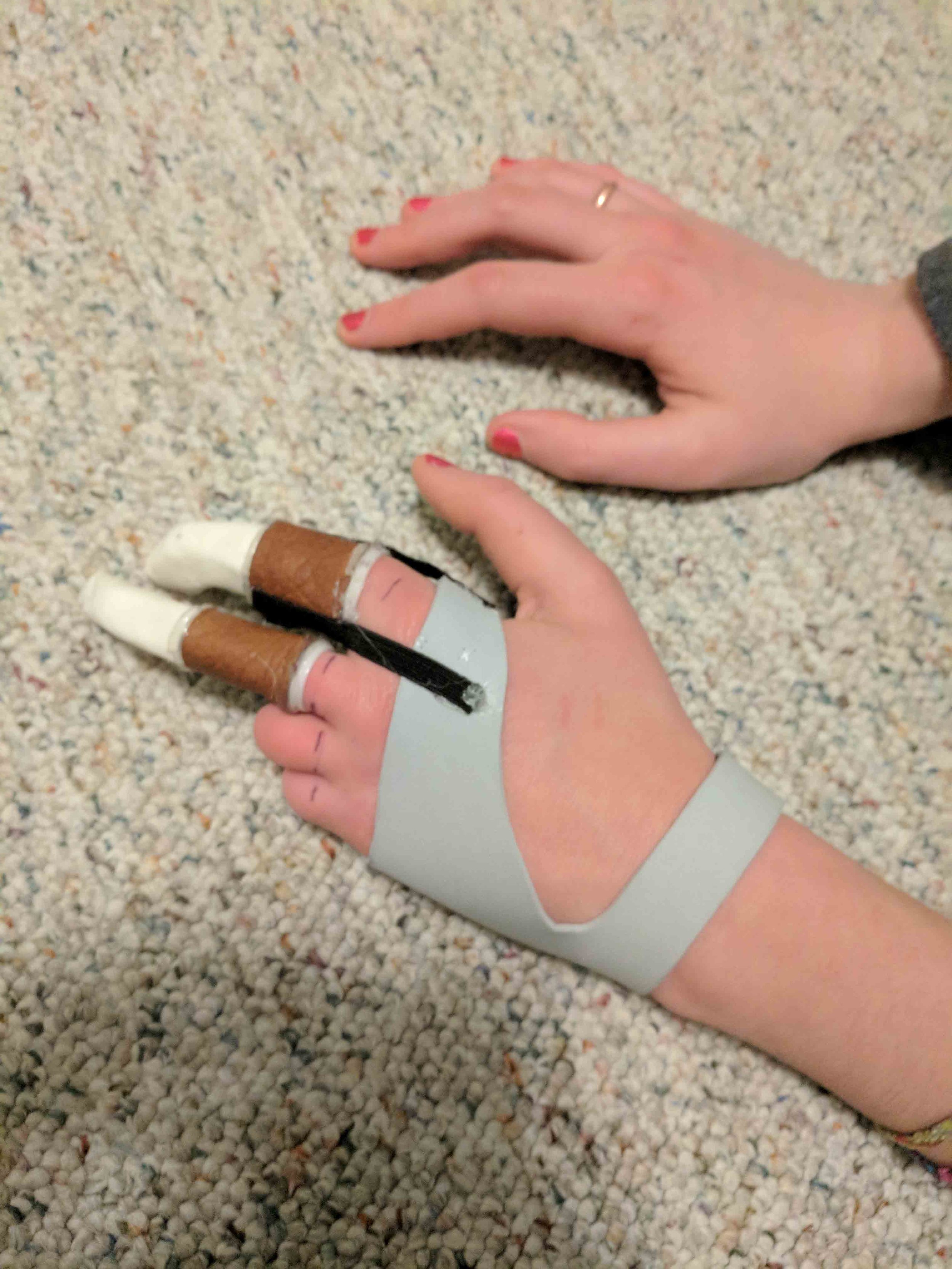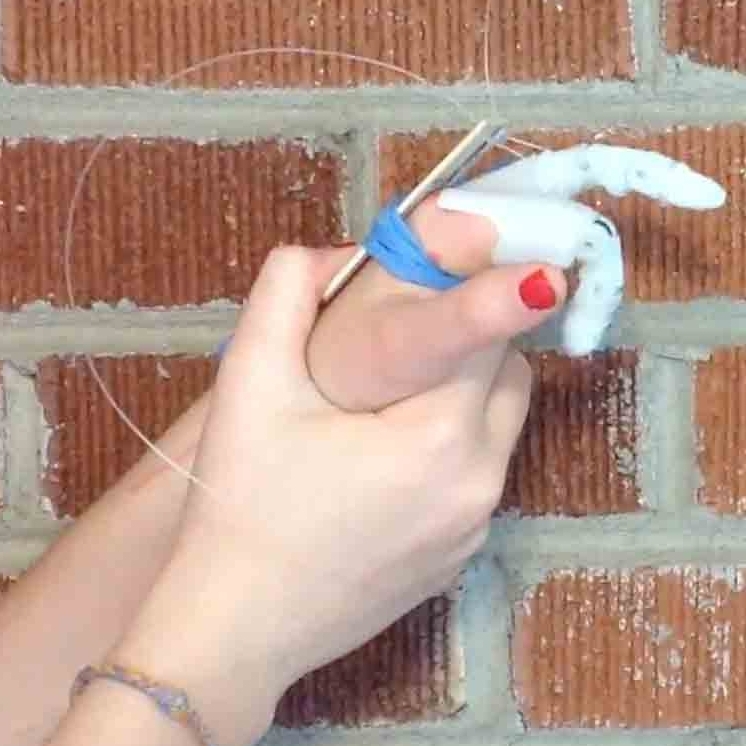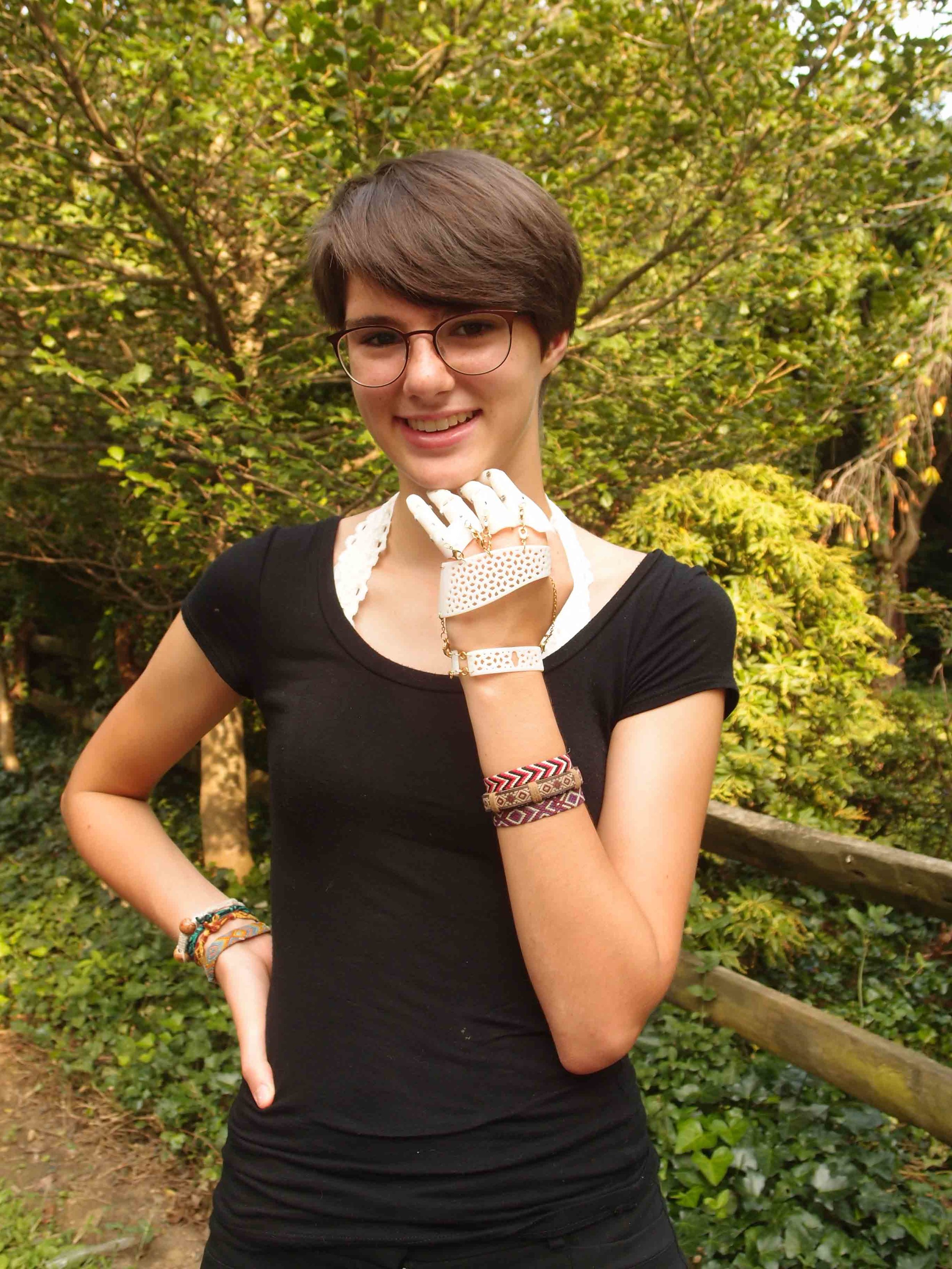DIGI-RIG
Fabrication Independent Study, Spring 2018
This project completed my minor in Architectural Design Fabrication. The study incorporates 3D modeling, 3D scanning, 3D printing, and physical prototyping in the process of making the prosthetic. The resulting prototype meets the goals of the academic semester, though further years of work could be invested to make a high-functioning prosthetic.
The Digi-Rig is a working prosthetic to replace four fingers of the left hand, for a client born with Symbrachydactyly. While many commercially-made prosthetics lack focus on aesthetic appeal, this study emphasizes the design component of the object, to make a device the client can enjoy wearing.
Parameters considered for the prosthetic include comfort, aeration, weight, and actuation method. The final prototype uses a string tension system to contract each finger, using the one existing joint (proximal) to actuate the two synthetic joints to curl. Because the client has been missing fingers since birth, she uses her gripping muscles in a unique way, requiring ample testing to work.
The study started with research into prosthetics, socket design & fitting, basic anatomy, 3D scanning, and related concepts. Next, the design required extensive work just to determine a shape, curl, and length that would match proportionally with the existing right hand, while also fitting the undersized left hand. The next step was to determine an attachment method and socket design that would work for the client. Then, the process moved into designing the 3D form and mechanics using string tension (for this, “Knick’s Prosthetic Finger” from Danger Creations was a very helpful reference). Finally, with the prototype functioning at a baseline, I integrated aesthetic details to produce the last prototype.
SECTION
The finger contracts when the cord is put under tension. The yellow cord drawn represents elastic, which keeps the finger tensioned straight as the default position. The orange cord represents a high-strength fishing line, which contracts the finger when pulled back towards the wrist.
